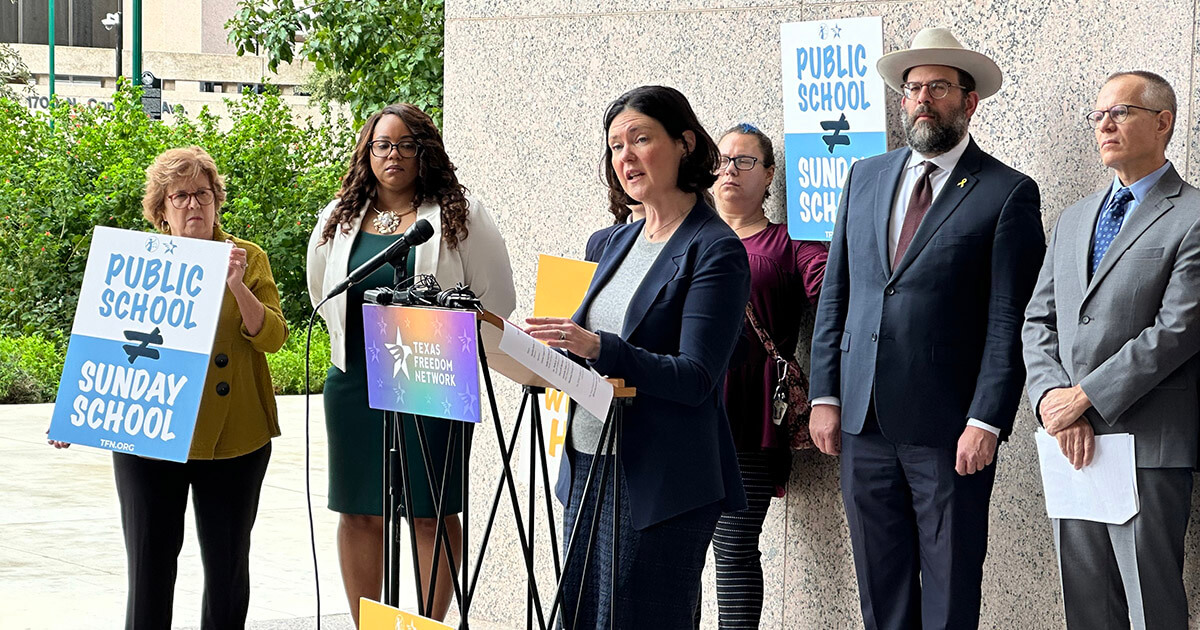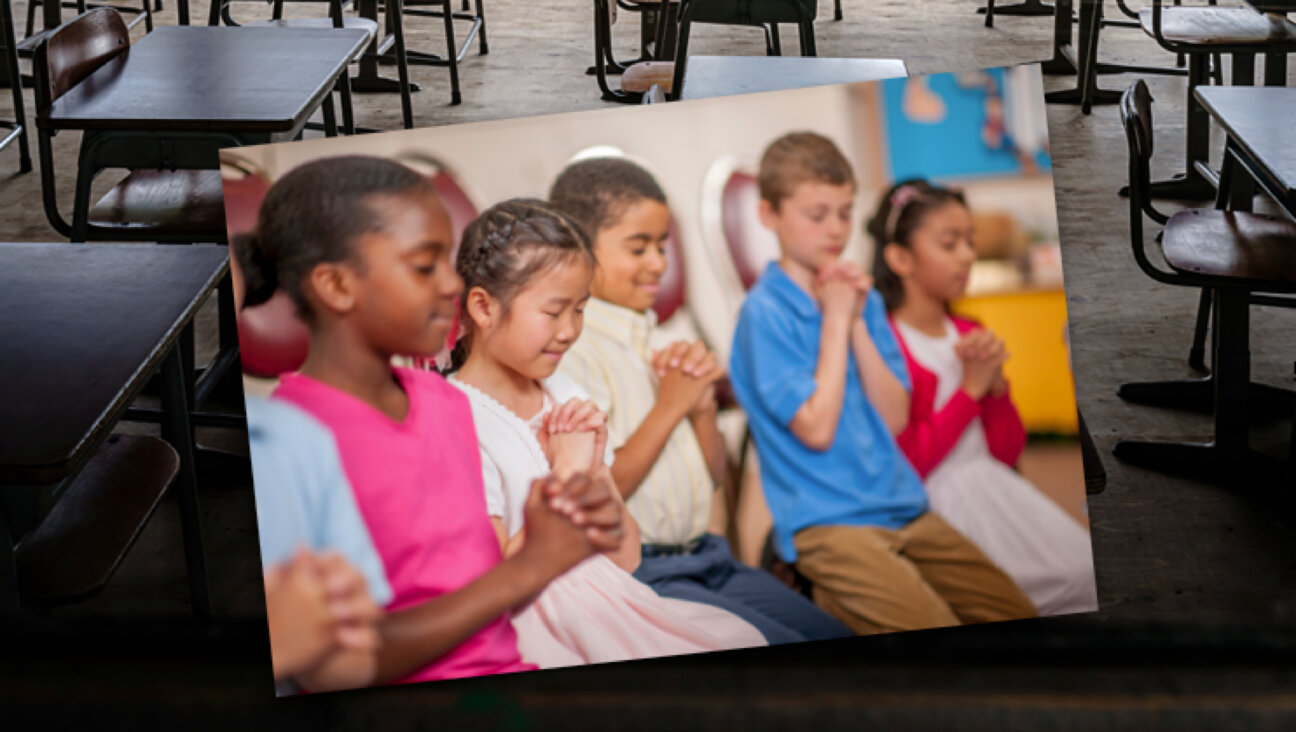How Jews are addressing the megillah’s bloodiest chapter during wartime this Purim
Some communities are choosing to address head-on the uncomfortable text of the Book of Esther’s ninth chapter at a time when the Jewish people are responding emotionally, spiritually and militarily to the deadliest attack on them since the Holocaust

Palestinians stand amid the rubble of houses destroyed by Israeli bombardment in Gaza. Photo by AFP/Getty Images
(JTA) — Like many synagogues, Rabbi Nate DeGroot’s California congregation had a tradition of accompanying the annual recitation of the Purim story with rowdy humor. But when the storytelling arrived at the penultimate chapter, the jokes stopped and a monitor that had displayed Purim-themed memes went dark.
That’s because Chapter Nine of the story, recounted in a book of the Bible called Megillat Esther, contains a vibe shift of its own. After eight chapters recounting how the Jews of ancient Shushan in Persia evaded a plot to kill them, the story turns to revenge. The Jews kill more than 75,000 people from the kingdom.
“Different communities have adopted different practices as it relates to Chapter Nine: reading it really quietly in a whisper, or kind of reading it as fast as possible to get through it quickly, or even chanting it in … a kind of a melody of mourning and destruction,” DeGroot recalled.
This year, following the outbreak of the Israel-Hamas war on Oct. 7, DeGroot wants Jews to take another approach: facing down the uncomfortable implications of Chapter Nine at a time when the Jewish people are responding — emotionally, spiritually and militarily — to the deadliest attack on them since the Holocaust.
“With everything happening in Israel and Gaza, and an attempted annihilation on people in Israel, and then a response that has, to this point, seen over 30,000 Palestinians of Gaza be killed, these questions of how do we respond to violence, how do we enact revenge or what is the response fueled by trauma of being attacked or being nearly attacked — how does that play out in reality?” DeGroot said.
As the associate director of the Shalom Center, a 40-year-old progressive Jewish activist group, DeGroot is helping lead an effort to “build a national movement of sacred justice that is rooted in the Jewish calendar.” So even in October, shortly after Hamas’ attack on Israel, he and his colleagues started envisioning ways to adapt Purim for the moment.
“We wanted to invite dreamers and thinkers and seekers and writers to imagine new endings to the Purim story,” he said. “What is a different Chapter Nine that would produce a different outcome? What is a Chapter Nine that could center peace, that could center the dignity and divinity of all of life and center nonviolence as a response?”
The result of the Chapter 9 Project is a set of texts that DeGroot hopes congregations might read in addition to the traditional text on Purim, which this year takes place starting the evening of March 23.
In one submission, a call for revenge is quelled by a response from Queen Esther: “Blood begets blood until Shushan drowns in it. What will safeguard the security of Shushan? What will stop the cycle of blood?”
In another, the story ends with feasting and merriment that erases symbols of violence. In this version, written by Rabbi Tamara Cohen, “the trees for hanging became trees for climbing,” the “foolish kings turned their scepters into pogo sticks,” “the masks became mirrors,” and “in every home in Persia there was light and joy and the dawning awareness that each and every person, whatever their age, gender, religion or lineage, is an olam katan, a precious, miniature world to be nurtured and treasured.”
A third, by Lipman Kanfer Foundation for Living Torah president Dan Libenson, preserves virtually all of the traditional Chapter Nine — but inserts a line revealing that the murder of 75,000 had taken place only in a dream of Mordecai, the leader of the Jews of Shushan.
Rabbi Arthur Waskow, the Shalom Center’s 90-year-old founder, writes in an introduction to the compendium that he had long worried that the violent impulses chronicled in Chapter Nine would prevail among the Jewish people — and that, in his view, they are now doing so in Gaza. Rethinking the Purim text, he said, offers an alternative.
“We can uproot the notion that Chapter 9 of the Scroll of Esther reports factual history or that it should be imitated by the present or any government of the modern State of Israel,” Waskow writes.
The idea that the megillah contains a record of gratuitous violence in response to an antisemitic attack is not universally accepted.
“A lot of folks point to Chapter Nine,” said Rabbi Stu Halpern, senior advisor to the provost and deputy director of the Straus Center at Yeshiva University who is also the author of “Esther in America,” about the megillah’s influence on the United States. “But there’s no verse in the Bible that says that the Jews in return actually did slaughter women and children from the other side. So I think that’s important to note.” (A verse in Chapter Eight does say they had license to do so.)
Halpern moved to Israel with his family three years ago and said he believed that a critical reading of Chapter Nine — and its implied criticism of the Israeli army — would not resonate there. “I don’t think that there’s any hesitation from our community that the army needs to do what it needs to do to get the hostages back and obviously, continues to do so while trying to the best of their ability to avoid civilian casualties,” he said.
But some Israelis have taken aim at Chapter Nine in the past. In 2017, the Israeli comedy show “HaYehudim Baim” (“The Jews are Coming”) included a sketch in which Mordecai welcomes a soldier back from the battlefront and presents him as a hero to the celebratory Jews of Shushan. The soldier’s speech does not go according to plan.
“I must tell you that what went on down there was just shocking,” the soldier says. “I don’t know what they told you, but there was no glorious victory there. It was simply a massacre. Since that day of battle, every time I close my eyes, I hear the screams. I see the bodies. The truth is, I haven’t slept since that battle.”
He adds, “I was part of the force that was sent to take out Haman,” and is interrupted by the crowd waving their noisemakers in the tradition of synagogues during the reading of the Purim story.
“You’re right, you’re right. I’m not arguing with you,” the soldier continues. “He’s a piece of s-—. But I want you to ask yourselves: What are his children guilty of?”
The Shalom Center’s Chapter Nine Project isn’t the only effort to place the violence of the Purim story in the context of the response to the Oct. 7 attack on Israel. The Hadar Institute, an egalitarian Jewish educational institution, is offering an online class ahead of Purim on reading the megillah after Oct. 7 that will explore the holiday not as a day of “drunken revenge fantasy” but as “a sobering story of confronting violence.”
Rabbi Aviva Richman, a leader at Hadar and one of the heads of the program, said the program will “acknowledge a vulnerability, the need for self-defense, and also within that, leave room to notice and reckon with the tragedy when innocent lives are lost on all sides.”
The texts that participants will look at include the Biblical story of Sodom and Gomorrah, where Abraham rescues his nephew Lot as God destroys the two cities for the sins of their citizens.
“We know in real life that actual war is more complicated and we know that in real life actual people have died, and lots of people are figuring out who to blame,” she said. “There has to be a moment of noticing and grief at the thought that innocent people have died.”
And Rafael Magarik, assistant professor of English at the University of Illinois, Chicago, wrote in the progressive blog Jewschool that he was more troubled by a smaller toll in the Purim story than the 75,000 mentioned in one verse. He notes that after the first retribution by the Jews, King Ahasuerus asks Esther, his wife, what else she would like done — and says he sees in her response a parallel to Israel’s prosecution of its war in Gaza.
“Esther asked Ahasuerus to prolong the war and prevent a ceasefire, and the immediate goal is not self-defense,” Magarik writes, noting that 300 people are killed after her request. “That’s a massacre of people, not a war fought in self-defense against one’s immediate assailants.”
Not everyone is interested in dwelling on Chapter Nine and violence this year, especially as Purim also commands joy at a dark time. Many rabbis and Jewish institutions have focused their holiday planning on helping Jews figure out how to celebrate even amid searing grief and with more than 100 Israelis still held hostage in Gaza. Others see broader parallels between the Purim story and the present moment.
“The celebration will no doubt be muted this year,” Halpern said. “The reality of Iran, today’s kingdom of Persia, of ancient Shushan, having proxies wage a war against the Jewish people, is undoubtedly particularly resonant.”
He added, “With all that, I think there is comfort to be found in the miracle of the eternal survival of the Jewish people.”
This article originally appeared on JTA.org.
















